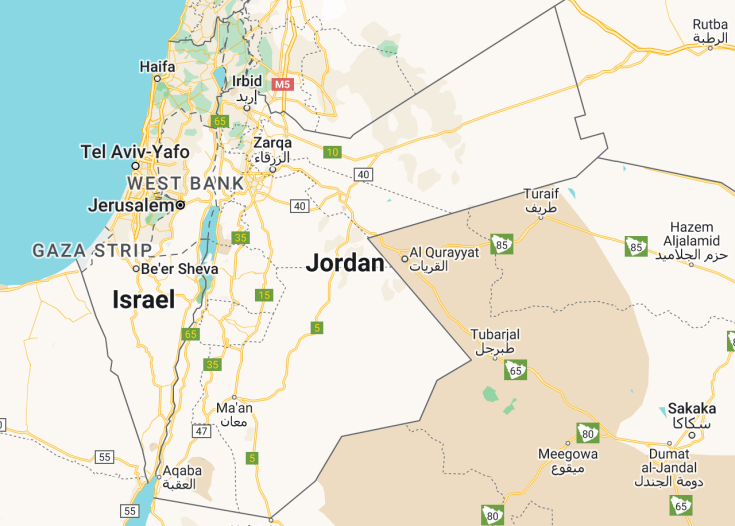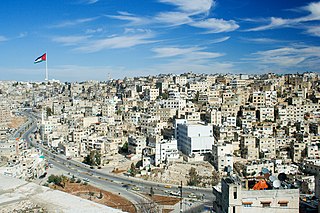Jordan is a captivating destination that offers a rich historical and cultural experience. From the ancient city of Petra to the surreal landscapes of Wadi Rum, Jordan is a treasure trove of wonders waiting to be discovered. Immerse yourself in the warm hospitality of its people and explore the vibrant markets filled with handicrafts and spices. With its diverse attractions, Jordan is a destination that will leave you spellbound.
Experience the magic of Petra, one of the New Seven Wonders of the World.
Venture into the vibrant city of Amman and explore its rich historical sites and modern cosmopolitan vibe.
Jordan: A Land of Ancient Wonders
| Capital | Amman |
| Time in Jordan | GMT+3 |
| Language spoken | Arabic |
| Population | 10.1 million (World Bank, 2021) |
| Religion | Islam (95.7%) Christianity (2.11%) Others (2.19%) |
| Currency | Jordanian Dinar (JOD) |
| Airports | Queen Alia International Airport Amman Civil Airport |
Jordan, a captivating country in the Middle East, is a land of ancient wonders. From the stunning rose-red city of Petra to the vast deserts of Wadi Rum, Jordan is a treasure trove of historical and natural marvels. Its rich history dates back thousands of years, with notable civilizations such as the Nabateans, Romans, and Byzantines leaving their mark on the land.
Located in the heart of the Middle East, Jordan is bordered by Syria to the north, Iraq to the northeast, Saudi Arabia to the east and south, and Israel and Palestine to the west. Its strategic position has made it a historical crossroad for trade and cultural exchange.
Jordan is famous for its archaeological sites, with Petra being its most iconic attraction. Known as the “Rose City,” Petra is a UNESCO World Heritage Site and one of the New Seven Wonders of the World. Its intricate rock-cut architecture and stunning natural surroundings make it a must-visit destination for history and adventure enthusiasts.
In addition to Petra, Jordan is home to other remarkable sites such as Jerash, a well-preserved Roman city; the Dead Sea, the lowest point on earth; and Wadi Rum, a desert landscape known for its red sand dunes and dramatic rock formations. Outdoor enthusiasts can also explore the Dana Nature Reserve, hike through the Wadi Mujib canyon, or take a dip in the Red Sea at Aqaba.
The population of Jordan is approximately 10.1 million. The official language is Arabic, and the majority of the population follows Islam. Jordanian culture is influenced by its Arab and Bedouin heritage, with hospitality being an integral part of the local customs.
When visiting Jordan, it is important to respect local traditions and customs. Dress modestly, especially when visiting religious sites, and be mindful of local norms and practices. The official currency is the Jordanian Dinar, and it is widely accepted throughout the country.
Where is Jordan located?
Jordan is located in the Middle East, bordered by Syria to the north, Iraq to the northeast, Saudi Arabia to the east and south, and Israel and Palestine to the west.
What is Jordan famous for?
Jordan is famous for its archaeological sites, including the renowned city of Petra. It is also known for the Dead Sea, Wadi Rum, and its rich historical and cultural heritage.
History
The history of Jordan spans thousands of years, with evidence of human habitation dating back to the Paleolithic era. The region that is now modern-day Jordan has been home to several ancient civilizations, including the Canaanites, Edomites, Ammonites, and Moabites. However, it was the Nabateans who left the most lasting mark on the region.
(4th century BC – 2nd century AD) Nabateans and the City of Jordan
The Nabateans were an Arab people who controlled a vast trading empire that stretched from southern Arabia to the Mediterranean. It was during their reign that the city of Jordan was founded as a major trading hub along the famous Incense Route. The Nabateans carved magnificent rock-cut tombs and temples into the sandstone cliffs surrounding the city, leaving behind a legacy of architectural wonders.
(2nd century AD – 7th century AD) Roman and Byzantine Rule
In the 2nd century AD, the Nabatean kingdom was annexed by the Roman Empire, and Jordan became a Roman province. The city of Jordan flourished under Roman rule, with the construction of impressive public buildings and infrastructure. However, the decline of the Roman Empire in the 5th century AD led to a period of instability, and the region came under Byzantine rule.
(7th century AD – 1921) Islamic Caliphates and Ottoman Rule
In the 7th century AD, Jordan came under Islamic rule with the expansion of the Arab Islamic empire. The city of Jordan became a provincial capital under the Umayyad and Abbasid caliphates. In the 16th century, the region fell under Ottoman rule and remained part of the Ottoman Empire until the end of World War I.
(1921 – Present) Jordanian Independence
After the collapse of the Ottoman Empire, the region of Jordan was placed under British administration as part of the League of Nations mandate. In 1921, the Emirate of Transjordan was established, with the city of Jordan as its capital. Over the years, Jordan gained independence from British rule and underwent significant political and social changes.
Today, Jordan is a modern nation that blends its rich history with modern advancements. The city of Jordan continues to be a cultural and economic center, attracting tourists from around the world to explore its historical sites and natural wonders.
Visit Jordan
What to see and do in Jordan
Jordan offers a wealth of attractions and activities for visitors to explore. Here are some of the top things to see and do in Jordan:
- Visit the ancient city of Petra, a UNESCO World Heritage site and one of the New Seven Wonders of the World. Explore the magnificent rock-cut architecture and marvel at the Treasury, the most iconic structure in Petra.
- Discover the vast desert landscapes of Wadi Rum, known for its stunning red sand dunes and unique rock formations. Take a jeep tour or go on a camel ride to experience the beauty of this desert wilderness.
- Float in the buoyant waters of the Dead Sea, the lowest point on Earth. The high salt concentration in the sea allows visitors to effortlessly float on its surface and experience its therapeutic properties.
- Explore the ancient Roman ruins of Jerash, which offer a glimpse into Jordan’s Roman past. Walk through the well-preserved colonnaded streets, visit the temples and theaters, and imagine life in ancient times.
- Hike in the stunning nature reserves of Dana Biosphere Reserve and Wadi Mujib, where you can experience the diverse flora and fauna of Jordan’s rugged landscapes.
- Experience Jordanian hospitality by staying in a traditional Bedouin camp in the desert, where you can enjoy traditional Bedouin cuisine, learn about their culture, and sleep under the stars.
Events in Jordan
Jordan hosts a variety of events throughout the year, offering visitors a chance to experience the cultural and traditional heritage of the country. Here are some notable events in Jordan:
- Jordan Independence Day (May 25th): Celebrated with parades, fireworks, and cultural performances, this national holiday commemorates the independence of Jordan from British rule.
- Jordanian Jerash Festival (July): This annual arts and culture festival takes place in the ancient city of Jerash and features live music, dance performances, and theatrical shows.
- Aqaba Traditional Arts Festival (August): Held in the coastal city of Aqaba, this festival showcases traditional arts and crafts, music, and dance performances, giving visitors a glimpse into Jordan’s cultural heritage.
- Amman International Film Festival (TBD): The capital city of Amman hosts this prestigious film festival, showcasing a selection of local and international films, as well as hosting workshops and panel discussions with industry professionals.
Best time to visit Jordan
The best time to visit Jordan is during the spring (March to May) and autumn (September to November) seasons. During these months, the weather is mild, with pleasant temperatures perfect for outdoor activities and sightseeing. The summer months can be extremely hot, especially in the desert regions, making it less comfortable for exploration.
It is also worth considering the timing of specific events and festivals in Jordan. The Jordan Independence Day celebration in May and the Jerash Festival in July are popular events that attract visitors from around the world.
Overall, plan your trip to Jordan based on your preferences and desired activities. Whether you want to explore the historical sites, indulge in outdoor adventures, or immerse yourself in the local culture, Jordan offers something for every traveler.
Is Jordan worth visiting?
Jordan is definitely worth visiting for those seeking a unique and enriching travel experience. The country’s rich history, stunning landscapes, and warm hospitality make it a captivating destination. The ancient city of Petra alone is reason enough to visit, with its awe-inspiring rock-cut architecture and fascinating history.
However, it is important to note that Jordan may not be for everyone. Travelers who prefer bustling cities and modern amenities may find Jordan’s more rural and traditional areas less appealing. Additionally, the country’s political and social landscape should be taken into consideration when planning a trip.
That being said, for those with an adventurous spirit and a curiosity for ancient history and natural wonders, Jordan offers a truly unforgettable experience. From exploring the desert landscapes of Wadi Rum to floating in the Dead Sea’s buoyant waters, Jordan’s unique attractions make it a destination worth visiting.













